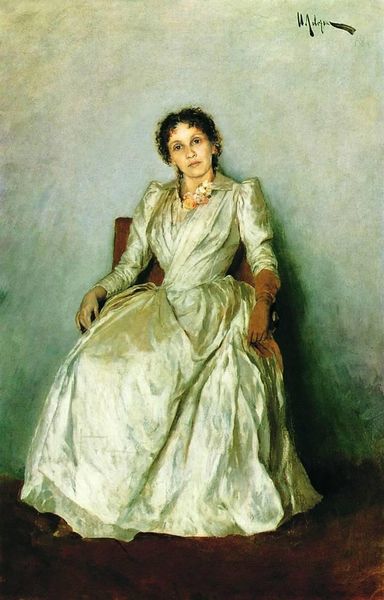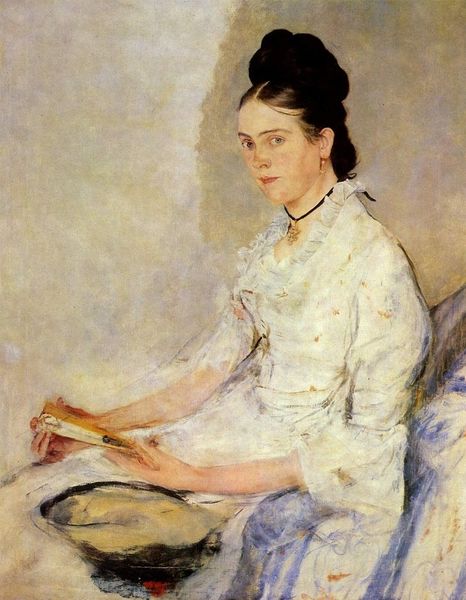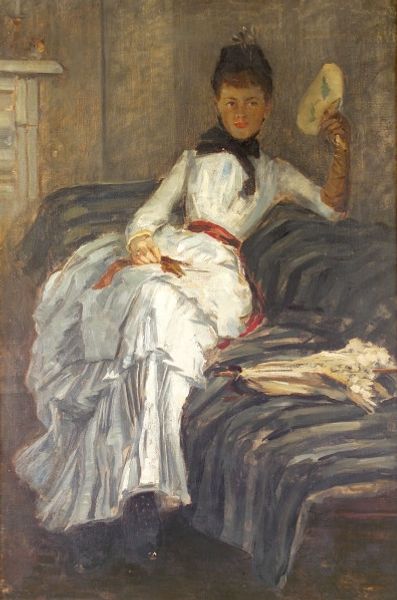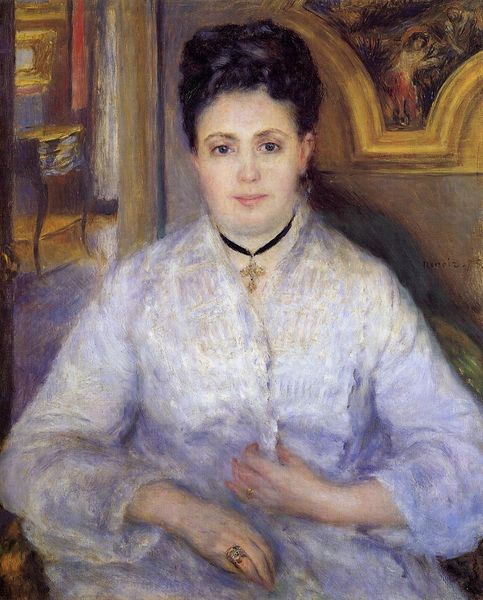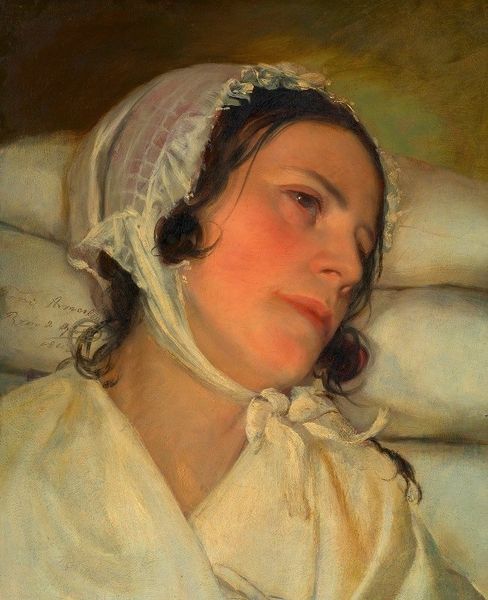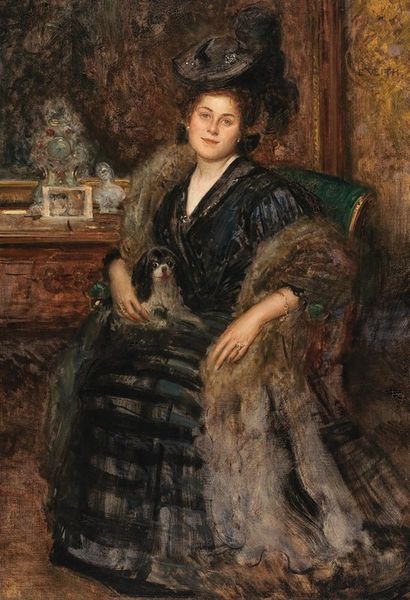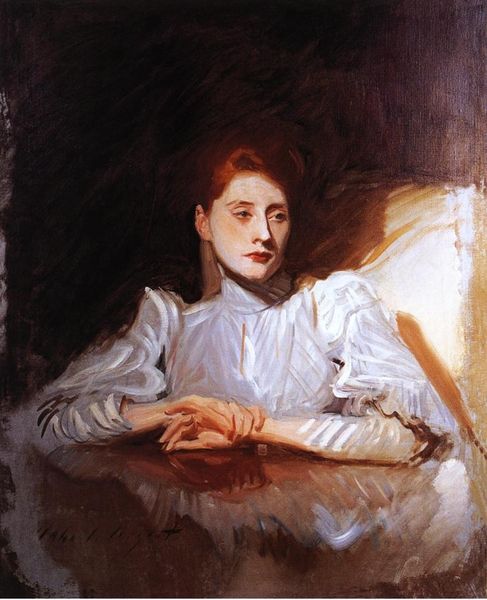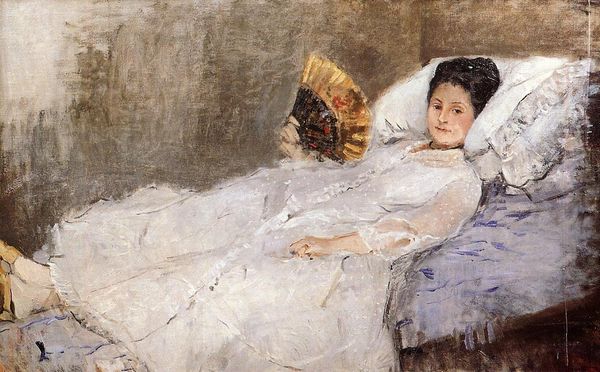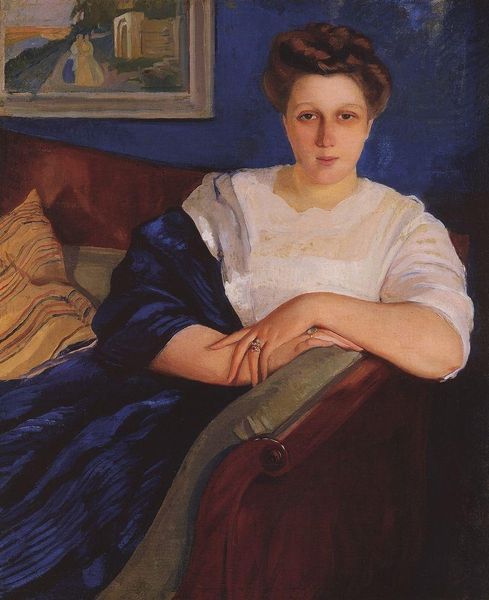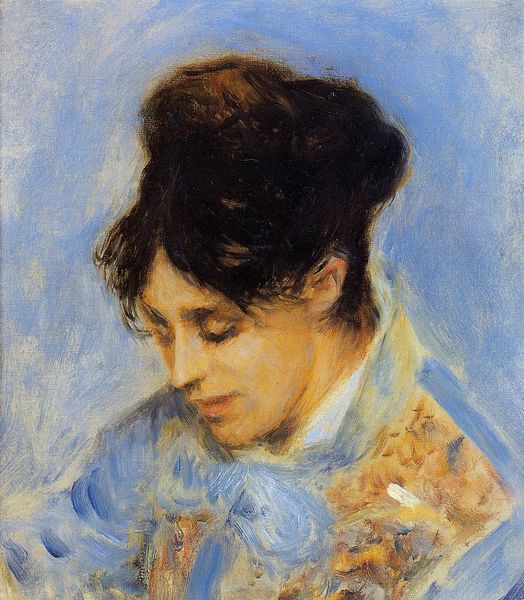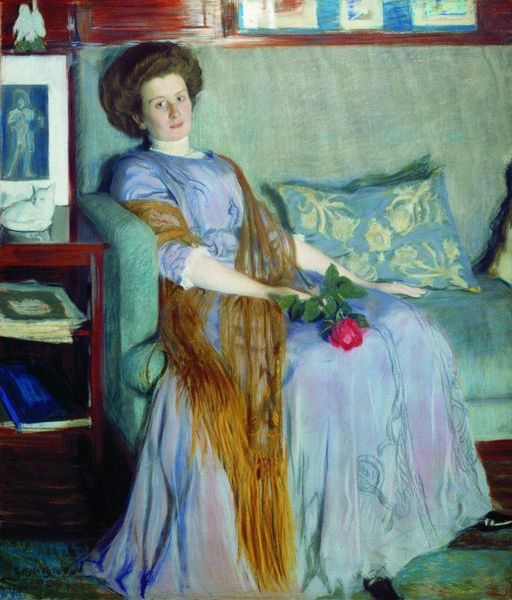
painting, oil-paint
#
portrait
#
self-portrait
#
narrative-art
#
painting
#
oil-paint
#
german-expressionism
#
figuration
#
oil painting
#
intimism
#
expressionism
#
portrait drawing
#
portrait art
#
modernism
Copyright: Public domain
Lovis Corinth painted ‘Donna Gravida’ in 1909, and it offers a glimpse into the evolving social attitudes toward the female body in early 20th-century Germany. The image creates meaning through its direct visual codes, depicting a pregnant woman with an unveiled gaze and relaxed pose. Made during a time of conservative social norms and increasing artistic experimentation, this work may reflect the influence of impressionism on Corinth. The choice to portray a pregnant woman so openly challenges traditional representations of women in art, which often idealized or moralized the female form. Corinth seems to engage in a progressive discourse around the realities of womanhood. The institutional history of art at this time, with its salons and academies, often dictated what was acceptable for display. Corinth's painting seems to push against these boundaries. To understand this artwork better, one might research the cultural debates surrounding motherhood and female identity in Wilhelmine Germany. Considering Corinth's work within its socio-political context reveals how art can engage with and challenge existing social norms.
Comments
No comments
Be the first to comment and join the conversation on the ultimate creative platform.
